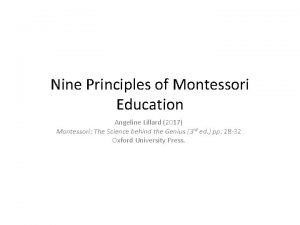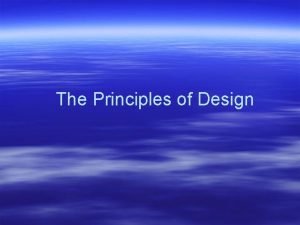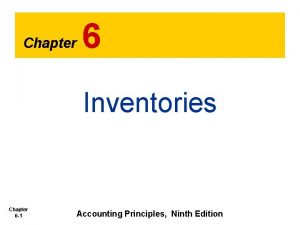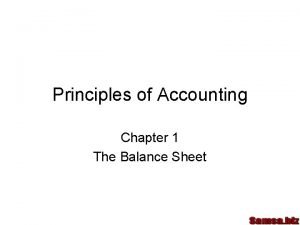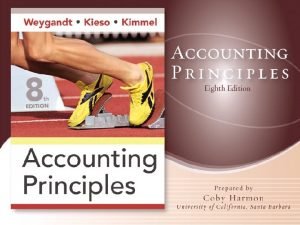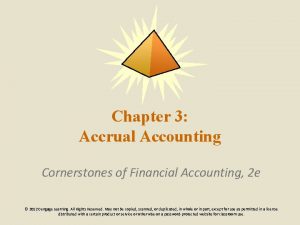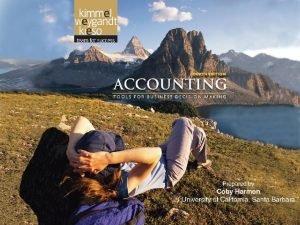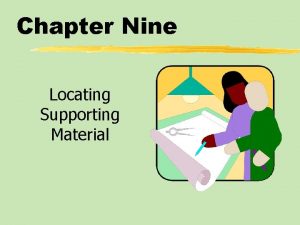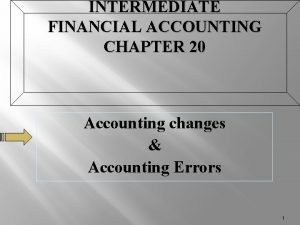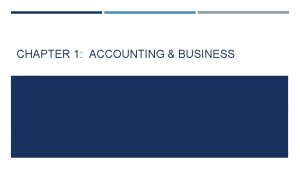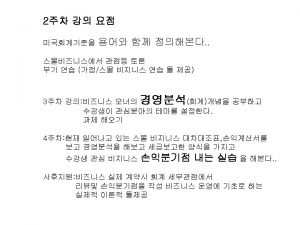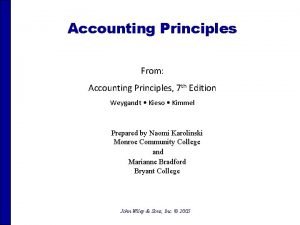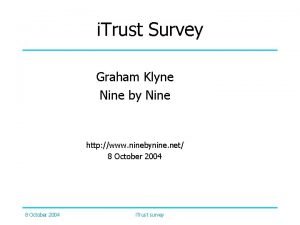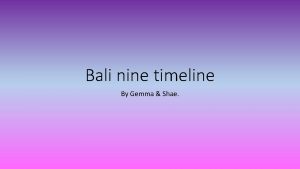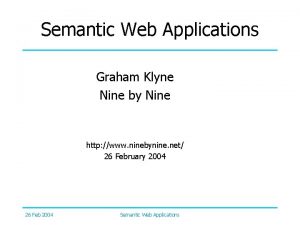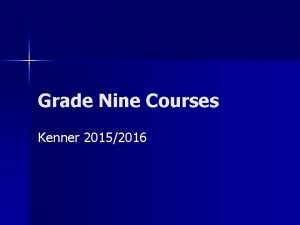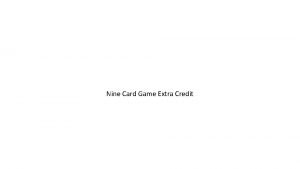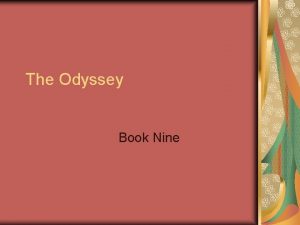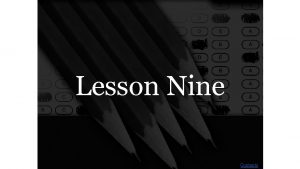CHAPTER NINE Principles of Accounting 3 PRINCIPLES OF















- Slides: 15


CHAPTER NINE Principles of Accounting

3 PRINCIPLES OF ACCOUNTING Objectives: 1. Describe the functions of accounting. 2. Complete an accounting equation. 3. Prepare a balance sheet. 4. Demonstrate the process of recording business transactions in equation form. Mc. Graw-Hill/Irwin Accounting Fundamentals, 7/e © 2006 The Mc. Graw-Hill Companies, Inc. , All Rights Reserved.

4 Beginning an Accounting System (continued) • Debts owed by a business are liabilities. • Owner’s equity is an accounting term that indicates the financial interest of the owner in a business. Mc. Graw-Hill/Irwin Accounting Fundamentals, 7/e © 2006 The Mc. Graw-Hill Companies, Inc. , All Rights Reserved.

5 The Accounting Equation Assets = Liabilities + Owner’s Equity Mc. Graw-Hill/Irwin Accounting Fundamentals, 7/e © 2006 The Mc. Graw-Hill Companies, Inc. , All Rights Reserved.

6 The Balance Sheet • The balance sheet is an itemized list of the assets, liabilities, and owner’s equity of a business on one particular date. Mc. Graw-Hill/Irwin Accounting Fundamentals, 7/e © 2006 The Mc. Graw-Hill Companies, Inc. , All Rights Reserved.

7 The Effect of Business Activities on the Balance Sheet • Business activities such as buying, selling, receiving money, and paying bills cause continual changes in the amounts of the assets, liabilities, and owner’s equity. Mc. Graw-Hill/Irwin Accounting Fundamentals, 7/e © 2006 The Mc. Graw-Hill Companies, Inc. , All Rights Reserved.

8 The Effect of Business Activities on the Balance Sheet (continued) • These business activities are called transactions and need to be recorded as part of the business’ operations. Mc. Graw-Hill/Irwin Accounting Fundamentals, 7/e © 2006 The Mc. Graw-Hill Companies, Inc. , All Rights Reserved.

9 Accounting Terminology • Account • Creditors • Accounting • Invest • Accounting Equation • Investment • Accounts Payable • Liabilities • Assets • Owner’s Equity • Balance Sheet • Proprietor • Business Transactions Mc. Graw-Hill/Irwin Accounting Fundamentals, 7/e © 2006 The Mc. Graw-Hill Companies, Inc. , All Rights Reserved.

10 Chapter Summary • Assets are the property owned by a business. • Liabilities are debts owed by a business. • Owner’s equity is the difference between the assets and the liabilities and represents the financial interest of the owner in a business. Mc. Graw-Hill/Irwin Accounting Fundamentals, 7/e © 2006 The Mc. Graw-Hill Companies, Inc. , All Rights Reserved.

11 Chapter Summary(continued) • Liabilities represent the claims of creditors to the assets of a business, and owner’s equity is the claim of the owner to the assets. • The fundamental accounting equation is: Assets=Liabilities + Owner’s Equity. Mc. Graw-Hill/Irwin Accounting Fundamentals, 7/e © 2006 The Mc. Graw-Hill Companies, Inc. , All Rights Reserved.

12 Chapter Summary(continued) • The balance sheet is a statement of assets, liabilities, and owner’s equity. It shows the financial position of a business on one particular date. • Every business transaction affects at least two items. Mc. Graw-Hill/Irwin Accounting Fundamentals, 7/e © 2006 The Mc. Graw-Hill Companies, Inc. , All Rights Reserved.

13 Topic Quiz Answer the following true/false questions: 1. All the properties a business owns are called assets. TRUE 2. Debts owed by a business are called liabilities. TRUE 3. Owner’s equity is the financial interest of creditors in a business. FALSE Mc. Graw-Hill/Irwin Accounting Fundamentals, 7/e © 2006 The Mc. Graw-Hill Companies, Inc. , All Rights Reserved.

14 Investigating on the Internet Sources of information about balance sheets can be accessed at the websites of most major businesses. As a research assignment, access two or three business’ websites. Compare and contrast their use of balance sheets and how they are used to show the state of the business. Mc. Graw-Hill/Irwin Accounting Fundamentals, 7/e © 2006 The Mc. Graw-Hill Companies, Inc. , All Rights Reserved.

15 Topic Quiz (continued) 3. Owner’s equity is the financial interest of creditors in a business. FALSE It is the financial interest of the owner in a business. (Return to Topic Quiz) Mc. Graw-Hill/Irwin Accounting Fundamentals, 7/e © 2006 The Mc. Graw-Hill Companies, Inc. , All Rights Reserved.
 Intermediate accounting chapter 1
Intermediate accounting chapter 1 Angeline bali
Angeline bali Refers to the equalization of elements in a work of art
Refers to the equalization of elements in a work of art Principles of accounting chapter 6 answers
Principles of accounting chapter 6 answers Principles of accounting chapter 2
Principles of accounting chapter 2 Advantages of computerized accounting
Advantages of computerized accounting Materiality concept
Materiality concept Role and responsibility of management accountant ppt
Role and responsibility of management accountant ppt Pharmacy accounting principles
Pharmacy accounting principles Inventory accounting principles
Inventory accounting principles Accrual accounting principles
Accrual accounting principles Accounting principles second canadian edition
Accounting principles second canadian edition Accounting principles second canadian edition
Accounting principles second canadian edition Accounting principles second canadian edition
Accounting principles second canadian edition Accounting principles
Accounting principles Chapter 4 accrual accounting concepts
Chapter 4 accrual accounting concepts

